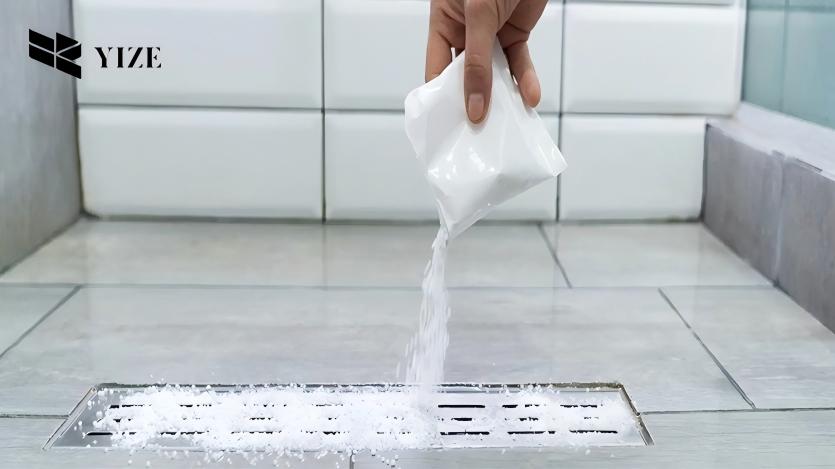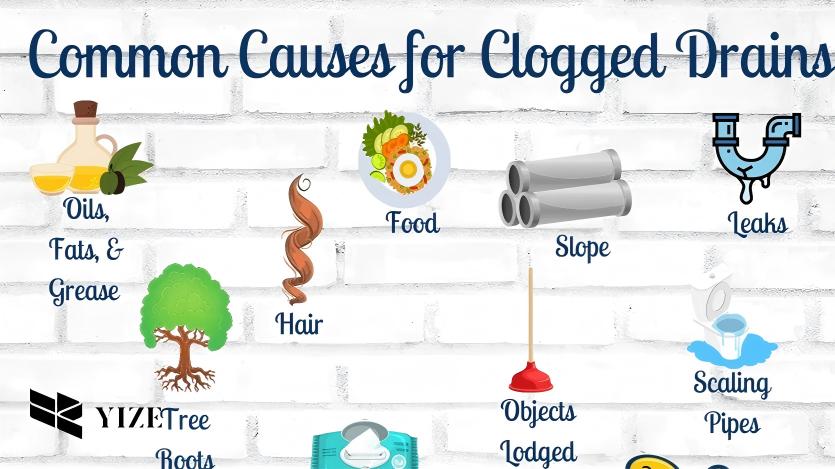
If you are a home or business owner, you are aware of how essential effective plumbing is to daily operations. Clog-free drain systems are important for managing waste water and hygiene. Drainage systems are very important for keeping water out of your home and preventing damage. Why? Because we like to ignore them until something goes wrong. A good drainage system is very important for keeping water away from the base of your home. It prevents the floor from flooding, which causes damage to the building.
A clogged bathroom drain is among the most common issues we face with plumbing systems. You can prevent these issues from affecting your outflow by identifying their causes and taking appropriate action. So, you can effectively reduce the amount of time and money you spend on bathroom drain cleaners. The safety of your home depends on identifying a clogged bathroom drain and maintaining a healthy sewer system. This is the reason why this article will discuss the most common causes of clogged bathroom drains and the methods for fixing them.
I. Common Causes of Clogged Bathroom Floor Drains: How to Fix Them

There are many causes for clogged bathroom drains. The causes listed below may help you decide if it’s time to call a plumber if your floor drain is blocked.
1. Leaks
Your plumbing system is at risk for leaks at any time. Water leakage into a building’s foundation may damage its basic structure with time. It’s breaking down floor beams and wall frames. Leaks in the plumbing system can damage the soil or concrete beneath homes. If you don’t fix underground leaks, they can also damage the support of your building. These problems can destroy plumbing system support structures. This irregular flow causes backups and clogs in the linear floor drain.
How to fix it:
Leaks are generally hard to figure out. This problem is usually noticed by property owners after it’s too late to fix. You should call for an emergency plumbing check if you think there is a leak in your home. You should also hire a plumber to do maintenance and checks on your pipes once a year as a safety step.
2. Plumbing overload
The majority of plumbing overloads happen in buildings with small sewage systems. Most of the time, the system can’t handle the load that comes from large families or a lot of people. This could cause a sewage tank to overflow. When a sewage tank overflows, water can back up and damage your yard, driveway, home, or office.
How to fix it:
You should contact a plumber when your plumbing system is completely overloaded. These professionals can empty your septic tank and repair any broken pipes. When it comes to upgrading for safe operation, they can also provide you with their professional advice.
3. Food clogs
The most common locations for food clogs are kitchen sinks and even floor drains. These cases involve flushing or disposing of food too large for pipes. The food clogs in the linear floor drains and pipelines as a result.
How to fix it:
The majority of food clogs can be cleared using a variety of techniques, depending on the item. Sometimes, pouring hot water down the floor drain will clear things out. You may need to use shower drain snakes for other food blocks. If you need help clearing a food clog quickly and easily, call your local plumbers right away.
4. Hair blockage
The shower drain is a common place for hair to become stuck. Hair usually goes through the pipes with the garbage and ends up in the sewage system. Unfortunately, hair can get stuck in pipes with u-bends or holes in pipes. The shower drain gets clogged when more stuff gets stuck in the hair clog.
How to fix it:
The best way to unclog a hair clog is to snake the pipe. This technique demands plumbing specialists’ tools and safety protocols. You should also install grating or drain covers on shower fixtures to avoid hair clogs.
5. Pipe scale
Pipe scale is the term used to describe the buildup of minerals within plumbing pipelines. This happens in places where the water is hard or where the water filter isn’t working well. Old iron pipes in old homes can also cause this problem.
How to fix it:
The pipe scale requires effective cleaning and maybe pipe replacement. You should talk to a reliable plumber about enhancing the water filtration system on your property. You should also ask about methods to lessen or remove the build-up of scale in your plumbing.
6. Grease, oil, and fat clogs
Oil and grease buildups happen a lot in restaurant and business kitchens. When cool water comes in touch with oil from fryers, pans, fatty meats, etc. After that, the oil hardens and sticks to pipe gaps. This stuff will stop pipes completely when it builds up to a certain point.
How to fix it:
If you have a small fat or grease clog, a steady flow of hot water may make it clear. Sometimes, you only need to use snakes or bathroom drain cleaners. Is there a stubborn clog of fat or grease in your home or business plumbing? You should quickly set up an appointment with a professional plumber.
7. Tree root blockage.
Tree roots are a less common reason for clogged bathroom floor drains or pipes. But, it is possible for tree roots to grow into underground lines over time. These tree roots may bend and break pipes, which can lead to big leaks and terrible clogs in the drains.
How to fix it:
If you have pipes underground, tree roots can do a lot of damage. These tree root growths require heavy tools and expertise to remove. So, you should hire a professional to remove the tree root blockage in your property.
II. FAQs
Q1: What does a plumber use to unclog a clogged bathroom floor drain?
When it comes to unclogging basic plumbing fixtures like linear floor drains or toilets, manual augers are your best bet. It also helps move things around and get through the sewer system. The plumbing snake can also clear minor clogs around the drain opening in most floor drains.
Q2: Is it safe to pour boiling water down the drain?
If your drains are clear, you can pour hot water down them. But if there’s a clog, the water will stay in the pipe. This can really hurt PVC pipes and seals by melting them. If you use hot water to clear out a toilet, the wax seal around the toilet may also melt.
Q3: Can bathroom drain cleaners make a clog worse?
Yes, using bathroom drain cleaners on clogged drains might make things worse. The powerful chemicals included in many floor drain cleaners have the capacity to corrode or harm pipes. This is especially true if they are made of PVC or another similar material. Also, chemical-based bathroom drain cleaners might not completely clear out the clog.
III. Conclusion
It is important to maintain your floor drains in good condition to avoid clogs. If you want to keep your home safe from possible dangers, the first step is to understand these common causes of clogged bathroom drains. The majority of linear floor drain clogs happen over time as grease, hair, and other materials stick to the pipe wall. If you don’t fix a clogged bathroom drain right away, it can be a pain and even do damage to your home. Thankfully, there is a solution for every issue.
You will find the proper solution by using the right procedure or hiring a plumber. You can quickly get your drains working normally again with a little work and patience. It is a good idea to call a professional if you are experiencing a clogged bathroom floor drain. You should also install high-quality floor drains. Yzdrain can help you prevent clogs because our linear floor drains are composed of high-quality stainless steel. We hope you found this post informative and helpful.
